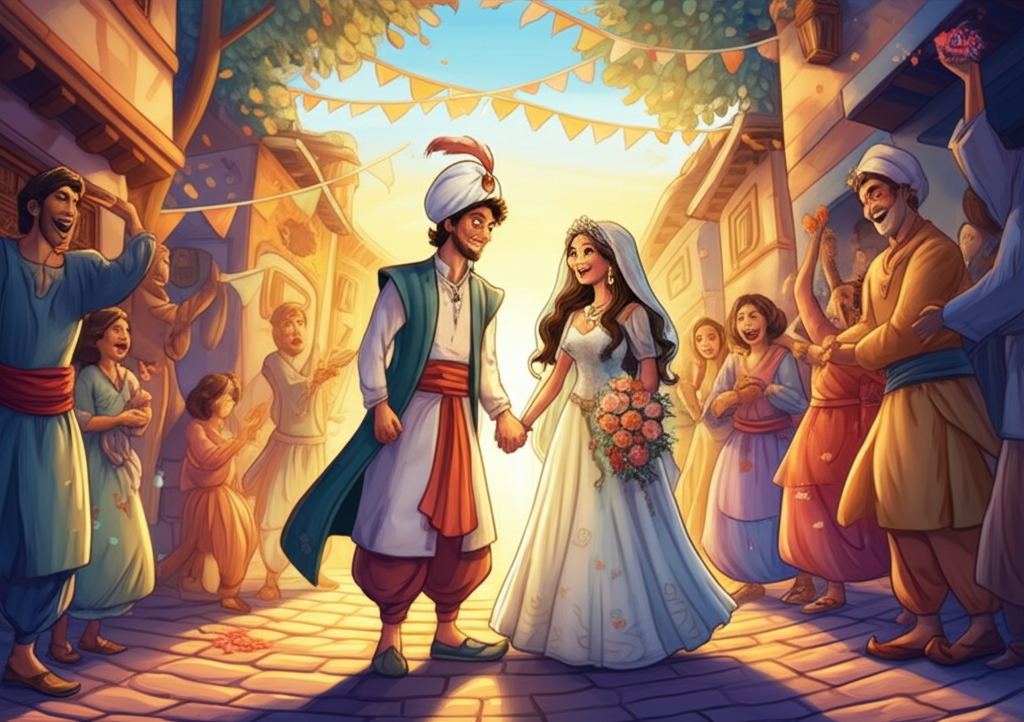One day, a fisherwoman was walking past the palace, calling out about her fish. The queen looked out of a window and waved her over to see what she had. Just then, a really big fish jumped in the basket!
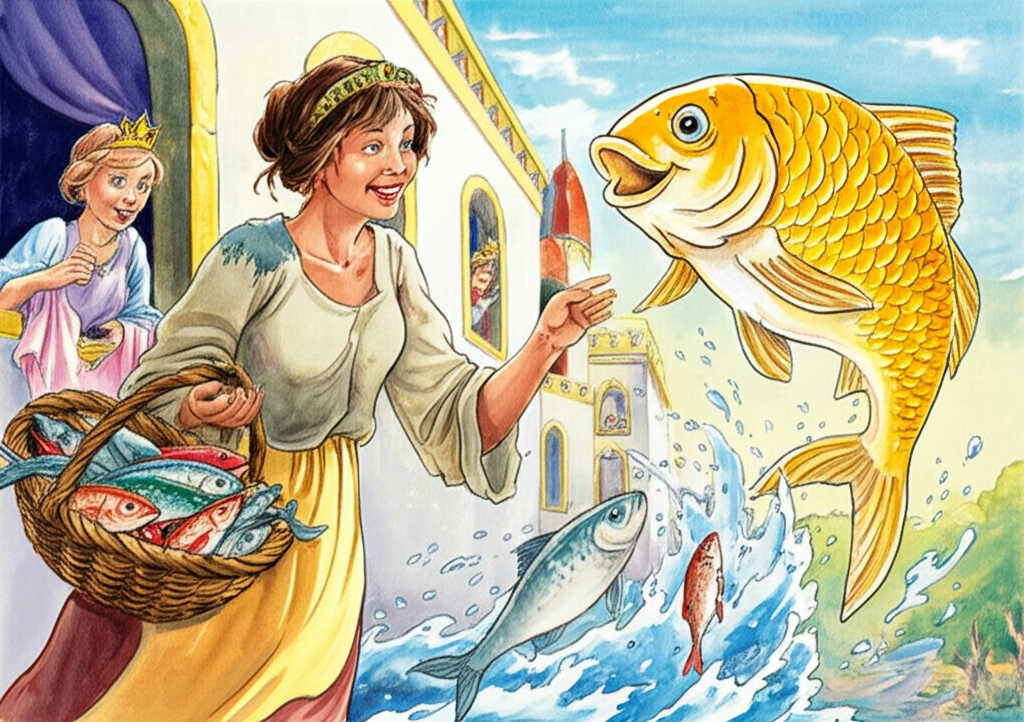
“Is it a boy or a girl fish?” the queen asked. “I want to buy a girl fish.”
The fish heard this and started laughing!
“It’s a boy,” the fisherwoman said, and kept walking.
The queen went back to her room, very angry. That evening, the king came to see her and noticed she was upset.
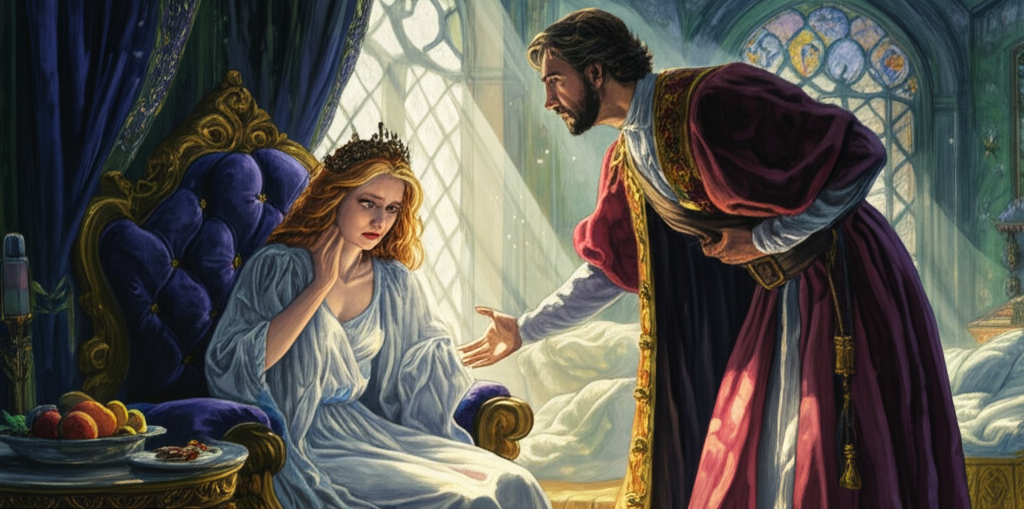
“Are you feeling okay?” he asked.
“No! I’m annoyed because of a strange fish. A woman brought one to me today, and when I asked if it was a boy or girl, the fish laughed!”
“A fish laughed? That’s impossible! You must be dreaming!”
“I’m not silly! I saw it with my own eyes and heard it with my own ears!”
“That’s so strange! Okay, I’ll find out about it.”
The next day, the king told his helper, the vizier, what his wife had said. He told him to find out why the fish laughed within six months, or he would be in big trouble! The vizier said he would try, but he thought it was impossible. For five months, he worked super hard to find out why the fish laughed. He asked everyone he could think of. He asked wise people, people who knew magic, and even tricksters! But no one knew. He went home feeling very sad, and started getting ready because he thought he was going to be in big trouble. He knew the king always kept his promises. He told his son to go on a trip until the king wasn’t so angry anymore.
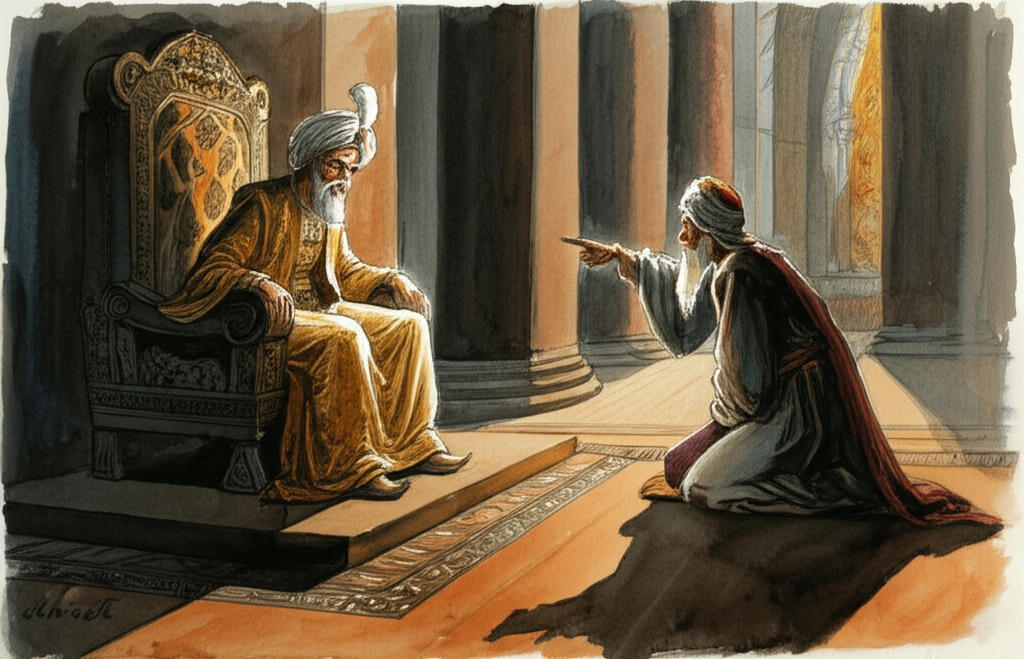
The young man was smart and good-looking. He set off on his adventure. After a few days, he met an old farmer who was going to the same village. The young man liked the farmer, so he asked if he could go with him, pretending he was going to the same place. The old farmer agreed, and they walked together. It was a hot day, and the walk was long.
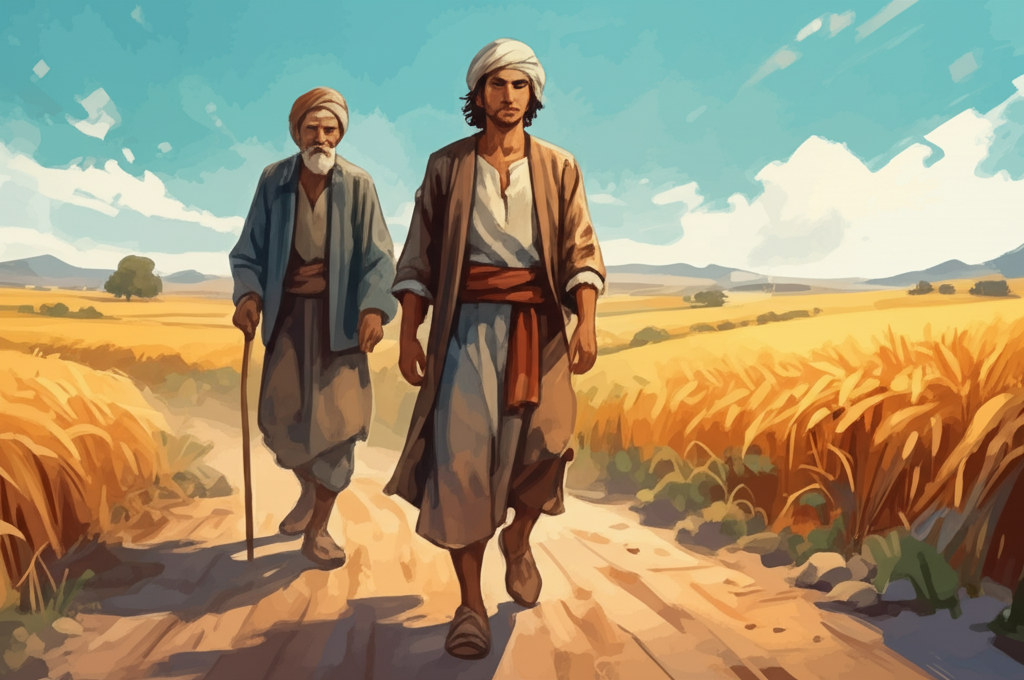
“Wouldn’t it be fun if we took turns helping each other along?” the young man asked.
“What a silly man!” thought the old farmer.
Soon, they walked past a field of corn that was ready to be picked. It looked like a golden ocean waving in the wind.
“Is this eaten or not?” the young man asked.
The old man didn’t understand, so he said, “I don’t know.”
After a while, they got to a big village. The young man gave the old farmer a pocketknife and said, “Take this and get two horses with it! But bring it back, because it’s special!”
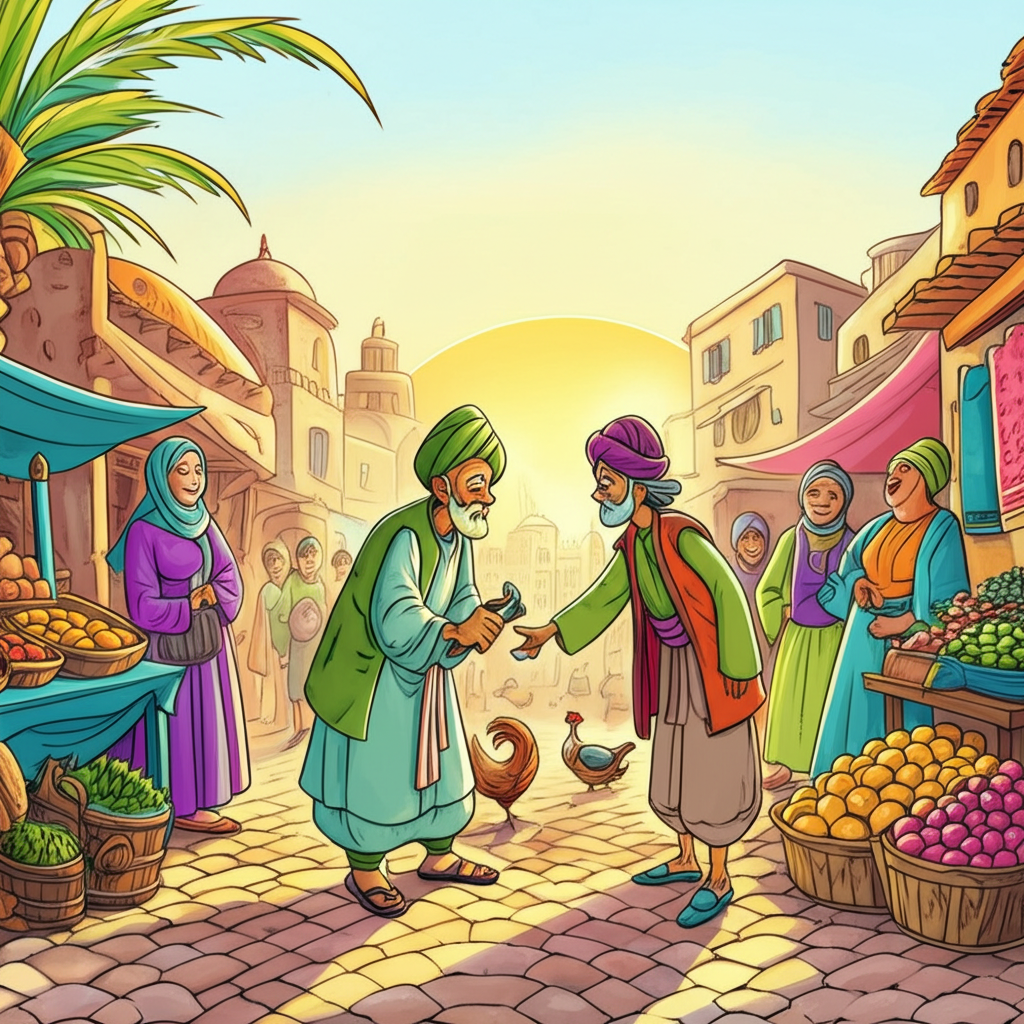
The old man looked confused and a little angry. He pushed the knife back and mumbled that his friend was either silly or trying to trick him. The young man pretended not to hear and didn’t say much until they got to the city. The old farmer’s house was just outside the city. They walked around the shops and went to the mosque, but no one said hello or asked them to come in and rest.
“What a big graveyard!” the young man said.
“What does he mean?” thought the old farmer. “This is a busy city, not a graveyard!”
When they left the city, they walked through a graveyard where some people were praying by a grave. They were giving out flatbreads to people in memory of someone who had died. They waved to the two travelers and gave them some too.
“What a wonderful city this is!” said the young man.
“Now, he must be crazy!” thought the old farmer. “I wonder what he’ll say next? He’ll be calling land water and water land!”
But he kept his thoughts to himself.
Soon, they had to walk through a stream. The water was deep, so the old farmer took off his shoes and pants and walked across. But the young man walked right through with his shoes and pants on!
“Wow! I’ve never seen someone so silly!” the old man said to himself.
But he liked the young man. He thought he would be fun for his wife and daughter, so he invited him to stay at his house as long as he needed.
“Thank you,” the young man said. “But first, I want to ask if the roof of your house is strong.”
The old farmer gave up and went into his house, laughing.
“There’s a man in the field,” he said to his family. “He walked here with me, and I wanted him to stay with us. But he’s so silly, I can’t understand him! He wants to know if the roof of our house is strong! He must be crazy!” And he laughed.
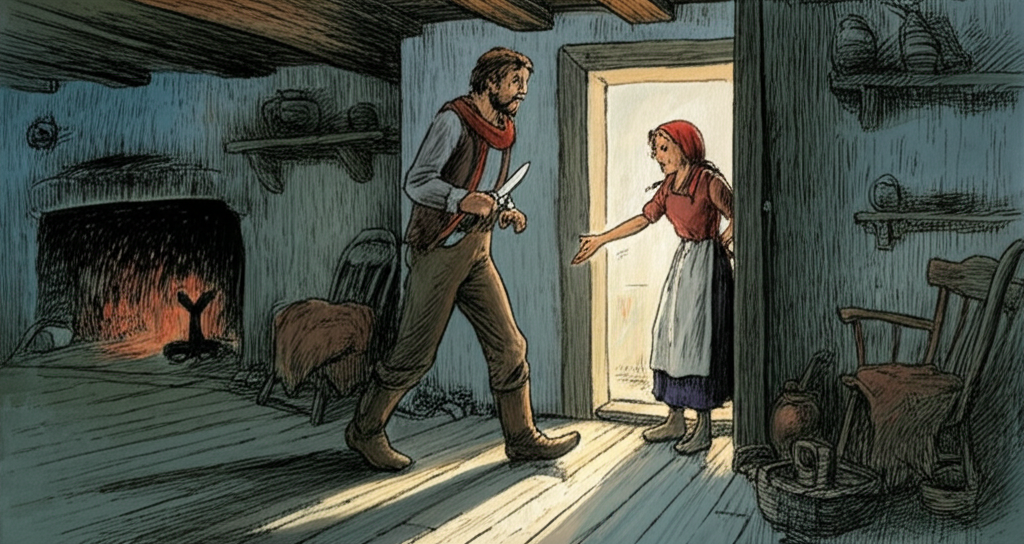
“Father,” said the farmer’s daughter, who was very smart, “that man isn’t silly. He just wants to know if you can afford to have him stay here.”
“Oh!” said the farmer. “I see! Can you help me understand some of the other things he said? When we were walking, he asked if I should carry him, or he should carry me!”
“He meant that one of you should tell a story to make the time pass faster!”
“Oh, right! And when we walked past the cornfield, he asked if it was eaten or not!”
“He wanted to know if the owner of the field was in debt. If he was, then the corn was already as good as gone to the people he owed money to!”
“Yes, yes, yes! And when we got to the village, he told me to take his knife and get two horses with it, and bring the knife back!”
“Aren’t two strong sticks as good as two horses for helping you walk? He just wanted you to cut two sticks and not lose his knife!”
“I see,” said the farmer. “When we walked through the city, we didn’t see anyone we knew, and no one gave us any food. But at the graveyard, some people called us over and gave us flatbread. So the young man called the city a graveyard and the graveyard a city!”
“That makes sense too, Father. The city is supposed to be where you get everything, but those people were not friendly, like they were dead. The city was like a graveyard, and the graveyard was full of kind people!”
“True, true! And when we walked through the stream, he walked right through without taking off his shoes!”
“I think he was smart!” said the girl. “I always thought it was silly to walk in that stream with bare feet. You could slip and fall and get all wet! He’s a very wise man. I want to meet him!”
“Okay,” said the farmer. “I’ll go get him.”
“Tell him our roof is strong, and he’ll come in. I’ll send him a gift to show him we can take care of him.”
So she called a servant and sent him to the young man with a bowl of melted butter, twelve flatbreads, and a jar of milk. She also sent this message: “The moon is full, twelve months make a year, and the sea is overflowing!”
On the way, the servant’s son saw the food and asked his father for some. The father said yes. Then he saw the young man and gave him the rest of the gift and the message.
“Tell your boss hello,” the young man said. “And tell her the moon is new, I can only find eleven months in the year, and the sea is not full at all!”
The servant didn’t understand, so he repeated the words to his boss. That’s how she found out he had stolen some food, and he got in trouble. After a while, the young man came in with the old farmer. They treated him very well, like he was a prince, even though they didn’t know who he was. Finally, he told them everything—about the laughing fish, his father’s problem, and why he had to leave. He asked for their advice.
“The laughing fish,” said the girl, “means that someone in the palace is trying to hurt the king!”
“Yay!” said the vizier’s son. “I can go back and save my father and the king!”
The next day, he hurried back to his country with the farmer’s daughter. He ran to the palace and told his father what he had heard. The vizier was very scared but told the king the news.
“No way!” said the king.
“It’s true!” said the vizier. “To prove it, call all the maids in the palace and have them jump over a hole. We’ll find out if there’s a man hiding!”
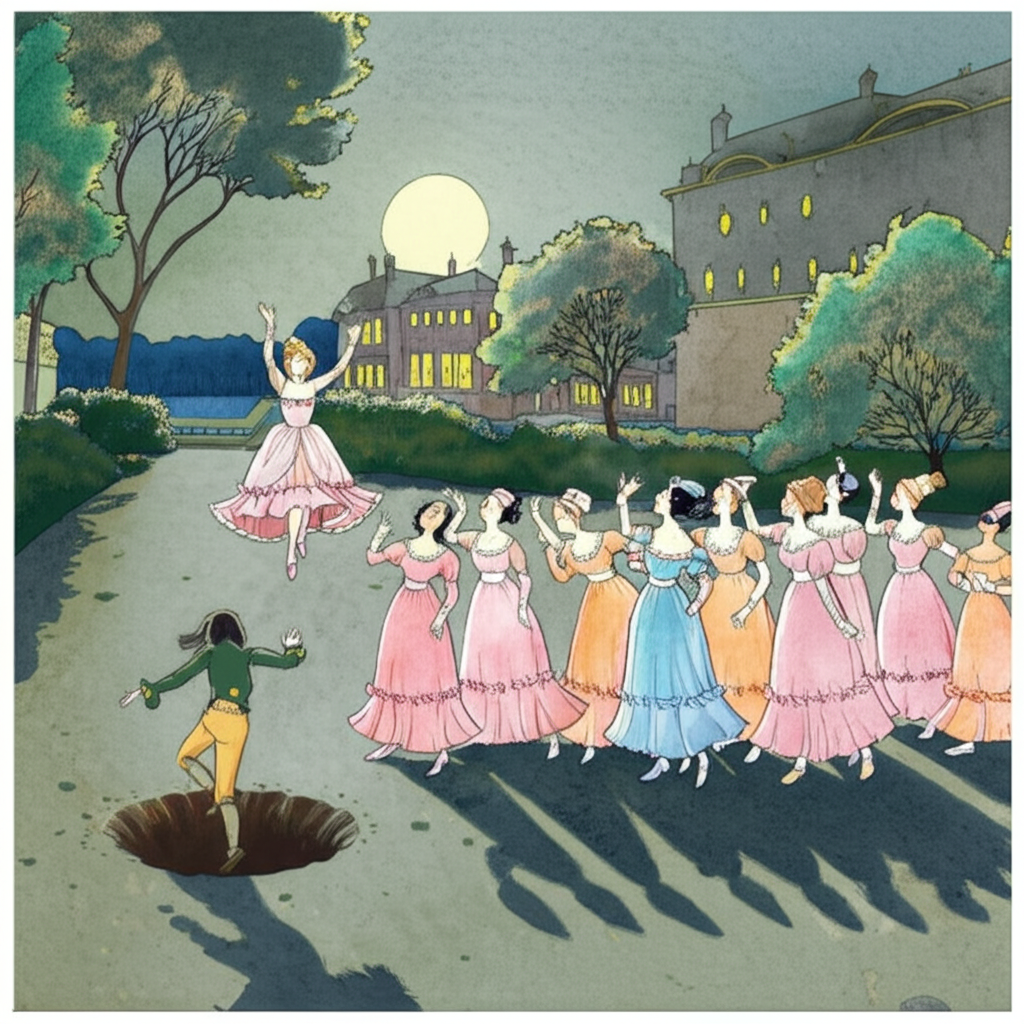
The king had the hole dug and told the maids to jump. They all tried, but only one made it. That one was a man!
So the queen was happy, and the vizier was saved!
Soon after, the vizier’s son married the farmer’s daughter, and they lived happily ever after!
